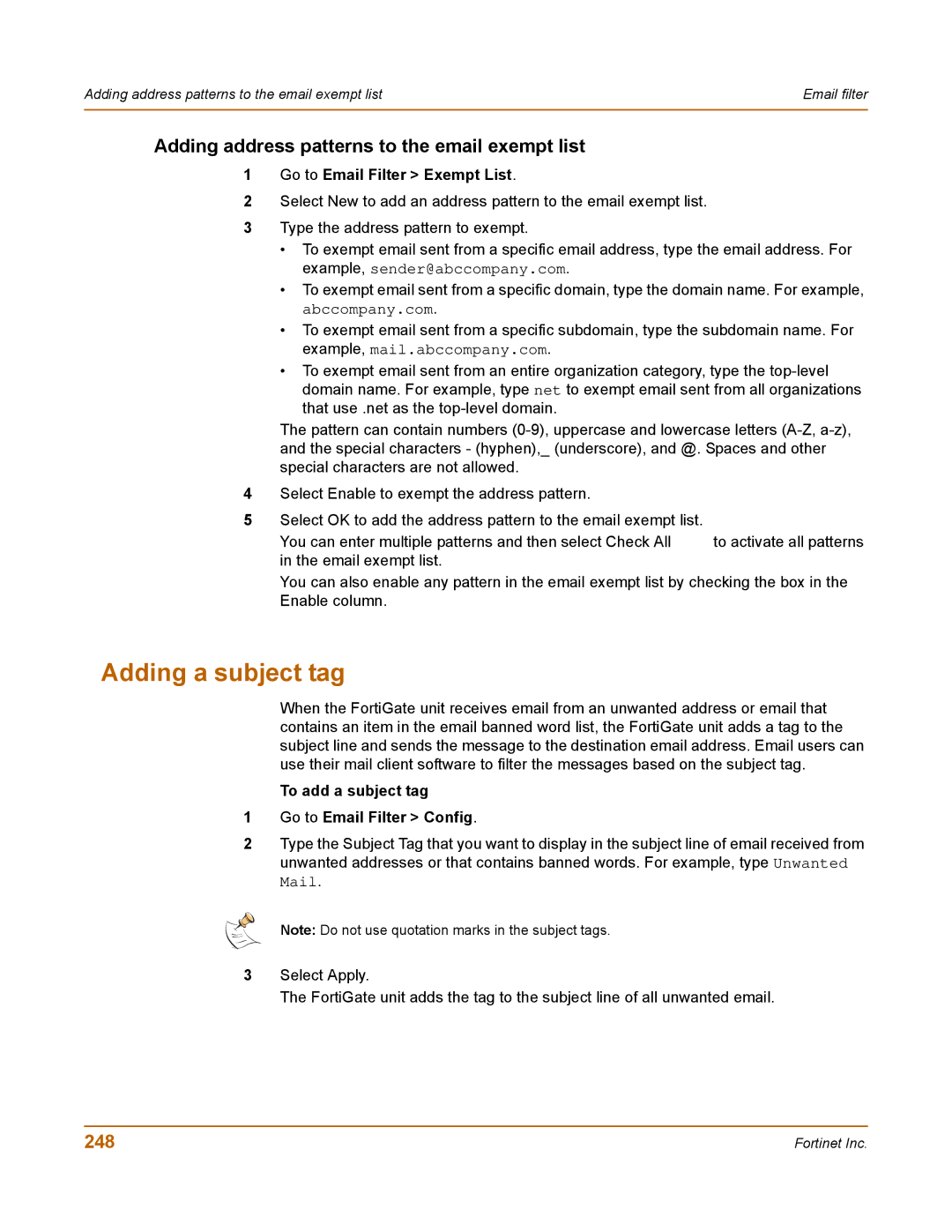
Adding address patterns to the email exempt list | Email filter |
|
|
Adding address patterns to the email exempt list
1Go to Email Filter > Exempt List.
2Select New to add an address pattern to the email exempt list.
3Type the address pattern to exempt.
•To exempt email sent from a specific email address, type the email address. For example, sender@abccompany.com.
•To exempt email sent from a specific domain, type the domain name. For example, abccompany.com.
•To exempt email sent from a specific subdomain, type the subdomain name. For example, mail.abccompany.com.
•To exempt email sent from an entire organization category, type the
The pattern can contain numbers
4Select Enable to exempt the address pattern.
5Select OK to add the address pattern to the email exempt list.
You can enter multiple patterns and then select Check All |
| to activate all patterns |
in the email exempt list. |
|
|
|
|
You can also enable any pattern in the email exempt list by checking the box in the
Enable column.
Adding a subject tag
When the FortiGate unit receives email from an unwanted address or email that contains an item in the email banned word list, the FortiGate unit adds a tag to the subject line and sends the message to the destination email address. Email users can use their mail client software to filter the messages based on the subject tag.
To add a subject tag
1Go to Email Filter > Config.
2Type the Subject Tag that you want to display in the subject line of email received from unwanted addresses or that contains banned words. For example, type Unwanted Mail.
![]() Note: Do not use quotation marks in the subject tags.
Note: Do not use quotation marks in the subject tags.
3Select Apply.
The FortiGate unit adds the tag to the subject line of all unwanted email.
248 | Fortinet Inc. |
